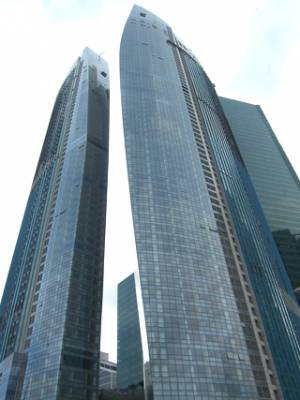Renting in Singapore: Guidelines and Costs

In late 2015, a Pew Research Center analysis of U.S. Census Bureau indicated a sharp increase in the number of adults living with their parents or other relatives from the year 2000, bringing figures back to the same range as the 1940s. While there are many possible reasons to explain this increasing trend, the financial cost of renting during the economic downturn is certainly one of the leading factors. Singapore is no exception to this phenomenon where many adults continue to live with their parents due to the high cost of rental. According to Numbeo, the world’s largest database of user-contributed data on the cost of living in cities, the cost of living is not only high in Singapore, but the average rental cost in Singapore is a startling 95.36% higher than that of the United States.
If you intend to live in the city centre in order to shorten your daily commute to work, be prepared to fork out at least fifty percent more in terms of rental costs. Also, the cost of renting private housing such as an apartment or condominium, is much steeper than that of a public housing apartment. The former would usually include shared facilities such as a gym, a swimming pool, and a tennis court.
Take a look below that summarises the average cost of rental in Singapore:
Apartment (1 bedroom) in City Centre
Average Monthly Rent: S$3,191.98
Range of Monthly Rent: $2,000-4,500
Apartment (1 bedroom) outside of City Centre
Average Monthly Rent: S$1,992.05
Range of Monthly Rent: $1,500-2,600
Apartment (3 bedrooms) in City Centre
Average Monthly Rent: S$6,225
Range of Monthly Rent: $4,300-8,000
Apartment (3 bedrooms) outside of City Centre
Average Monthly Rent: S$3,509.09
Range of Monthly Rent: $2,600-4,500
Despite the high cost involved, many expatriates are still keen to live on private property in order to attain similar standards of living as they had enjoyed back home. This may not always be achievable in land-scarce Singapore without handing over a kidney or two. Just for comparison’s sake, an apartment costs an average of S$3,285.95 per square metre in the city centre in the United States, while the same costs a whopping S$25,523.02 in Singapore. And if that’s just for an apartment, imagine the cost per square metre for landed property!
Renting, though expensive, may be a viable option for those aiming to stay in Singapore in the short term. Whether you choose to engage an agent or to search for an apartment on your own, make sure you are familiar with the tenancy laws in Singapore. It is especially important to ensure that you understand each term in the contract before signing on dotted line as the laws in Singapore favour the landlords over the tenants.
A tenancy agreement is the most important document that you’d need to protect yourself before moving into any new apartment. There are 6 main issues that should be listed in detail in every tenancy agreement:
- The Security Deposit
- Property Handover and Handback
- Maintenance and Repairs
- Payment Terms
- Lease Renewal
- Termination
The security deposit, sometimes paid in advance by the lodger as a Good Faith Deposit to ensure that landlords do not lease the unit to someone else, provides landlords with peace of mind in case lodgers default on rental payments or maintenance and repair fees. For a lease of one year, the deposit is usually equal to one month’s rental fee. A lease of two years would mean a security deposit equivalent to two months’ rental fee. Note that the security deposit may be withheld by the landlord in cases where the lodgers do not fulfil their part of the agreement—neglecting to perform the upkeep of household equipment for instance.
Once the keys to the unit are handed over to the tenant, the tenant should protect himself by taking photographs of each room as well as furniture, and informing the landlord promptly of any damages found. Without this evidence, and barring the inclusion of a fair wear and tear clause in the tenancy agreement, the landlord may attempt to hold onto the security deposit when it is time for the property to be handed back, and lodgers may find it difficult to extricate from the situation with their wallets intact.
Maintenance and repairs should also be a part of the tenancy agreement. For instance, it may be the tenant’s responsibility to pay for the air-conditioning unit maintenance during the period of his stay, or to pay for any repairs that fall below a certain sum. Payment terms, such as the monthly deadline and late payment charges for rental payments, as well as the cost of utility bills, electricity bills and internet charges, should also be laid out explicitly in the tenancy agreement.
Lease renewal and termination are also two important parts to include in every tenancy agreement. Tenants who are given the option to renew their lease may be obliged to inform their landlords of their intention to continue or discontinue the rental, months in advance. The terms would usually remain the same, but both lodger and landlord are free to renegotiate upon renewal.
Those who wish to terminate their lease early, however, in the event that they have lost their job or need to leave the country, may wish to include a clause in their agreement which allows them to end their stay by paying two months’ rent. However, this usually only applies to lodgers who are staying for a period of longer than 12 months, and may in turn cause the landlord to add an additional clause in the contract, where the lodger would have to refund a portion of the sum paid to the landlord’s agent who had helped to negotiate and confirm the initial lease duration with the lodger.
05 Jan 2017Rayne